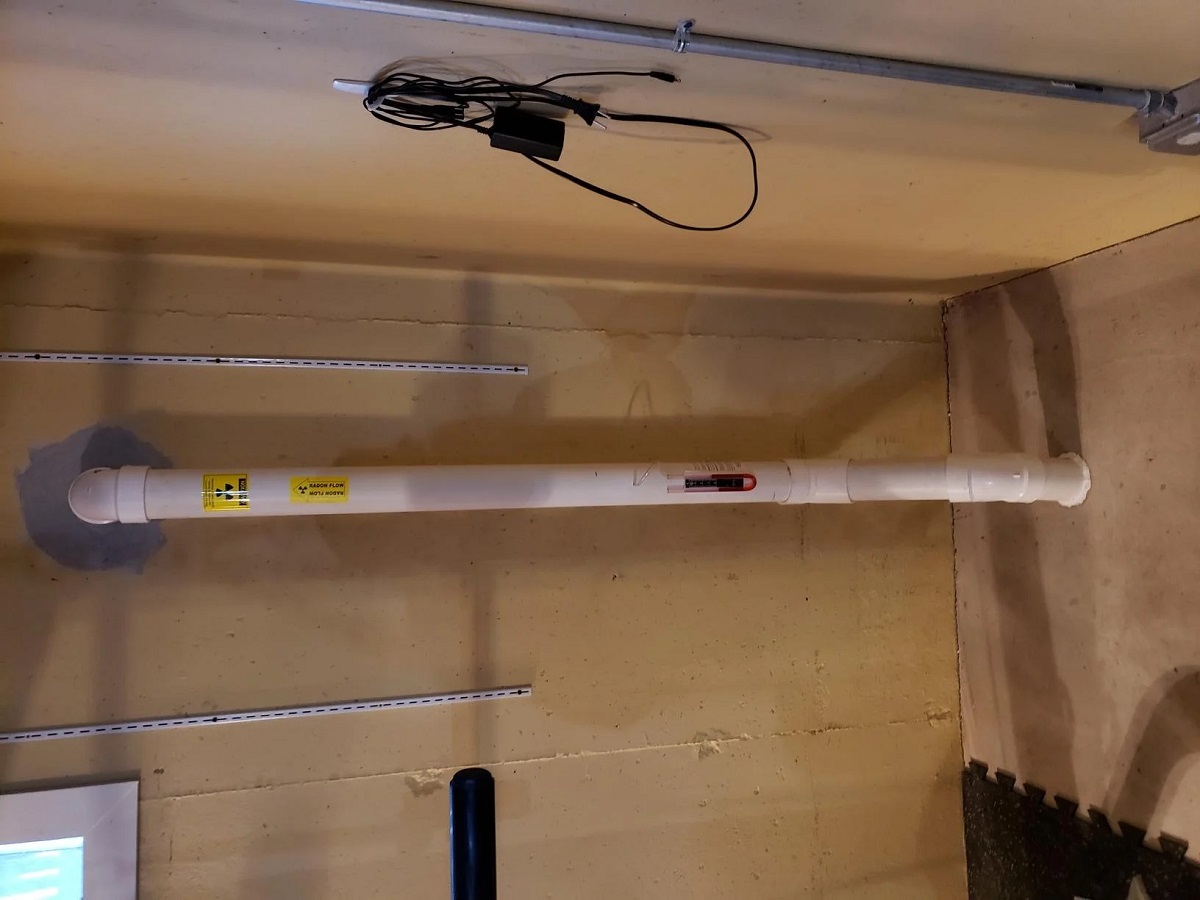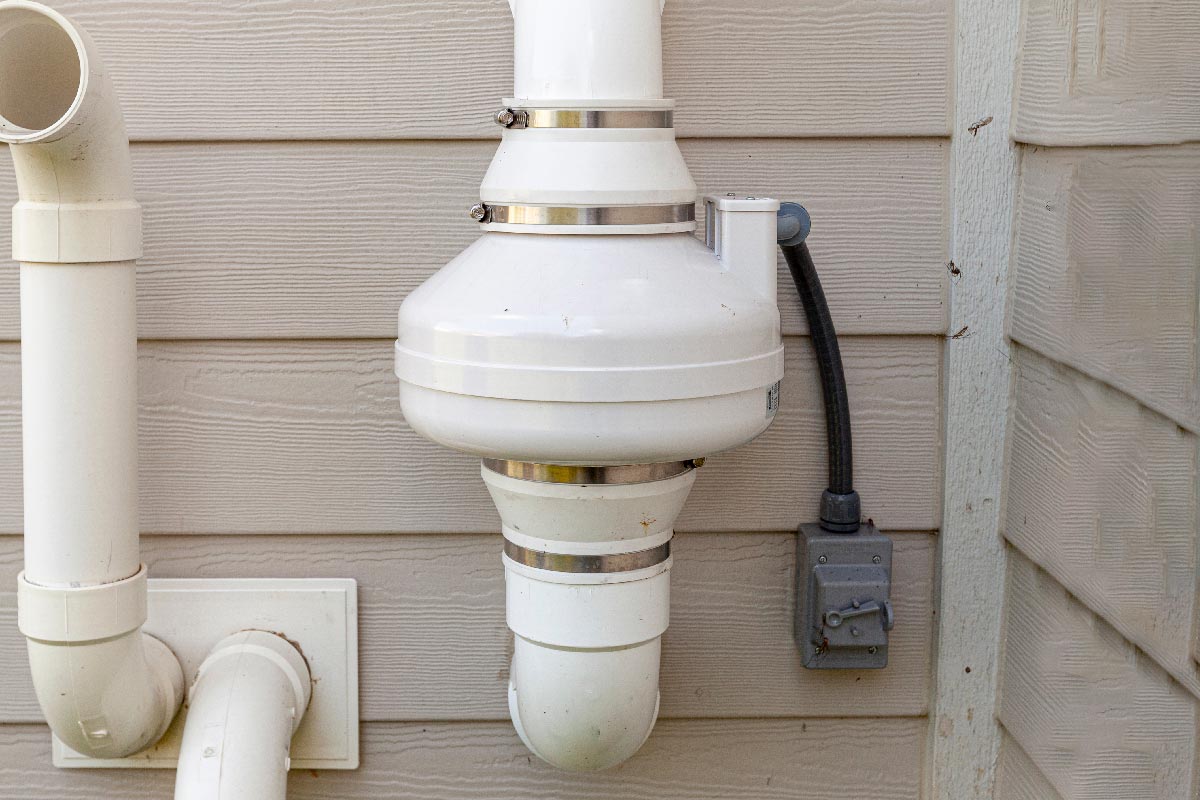

Articles
What Is Radon In Basement
Modified: December 7, 2023
Discover the dangers of radon in basements and how it can impact your health. Read informative articles to understand the risks and learn effective prevention measures.
(Many of the links in this article redirect to a specific reviewed product. Your purchase of these products through affiliate links helps to generate commission for Storables.com, at no extra cost. Learn more)
Introduction:
Welcome to our comprehensive guide on radon in basements. Radon is a colorless, odorless, and tasteless gas that poses serious health risks. It can seep into your home through cracks, gaps, and other openings in your foundation. Basements are particularly susceptible to radon accumulation due to their proximity to the ground. In this article, we will explore what radon is, its potential sources in basements, the health risks it poses, how to test for it, and how to mitigate and prevent radon in your basement.
Radon is a naturally occurring radioactive gas that is formed from the breakdown of uranium in rocks, soil, and water. It can enter your home through gaps in the foundation, sump pumps, and even through the water supply. Once inside, radon can become trapped in your basement, potentially reaching dangerous levels over time.
Before we dive into the sources and dangers of radon in basements, it’s important to understand that radon is a leading cause of lung cancer, second only to smoking. According to the U.S. Environmental Protection Agency (EPA), radon is responsible for approximately 21,000 lung cancer deaths each year in the United States. These alarming statistics highlight the importance of being aware of and addressing radon in your home.
In the next sections, we will discuss the various sources of radon in basements, the health risks associated with radon exposure, how to test for radon, and the steps you can take to mitigate and prevent radon from entering your basement. By the end of this article, you will have a comprehensive understanding of radon and the necessary knowledge to protect yourself and your loved ones.
Key Takeaways:
- Radon, a silent threat, can enter basements through soil, rock, water supply, and construction materials. Regular testing and proactive mitigation methods are crucial to safeguard against its harmful effects, including lung cancer.
- Mitigation techniques such as sealing cracks, sub-slab depressurization, and crawl space encapsulation can effectively reduce radon levels in basements. Seeking professional assistance and regular monitoring are essential for maintaining a safe living environment.
Read more: What Is A Safe Radon Level In A Basement
Understanding Radon:
Radon is an invisible and odorless gas that occurs naturally in the environment. It is a byproduct of the decay of uranium, a radioactive element found in rocks, soil, and water. As uranium breaks down, it releases radon gas into the surrounding air.
Being a gas, radon can easily enter buildings through cracks and openings in the foundation. Once inside, it can accumulate and reach hazardous levels, especially in areas with poor ventilation, such as basements. Therefore, understanding radon and its behavior is vital in ensuring a safe living environment.
Radon is classified as a Group 1 carcinogen by the International Agency for Research on Cancer. This means that it is known to cause cancer in humans. In particular, radon exposure is linked to lung cancer, with non-smokers being at a higher risk compared to smokers.
Radon gas decays into solid radioactive particles called radon progeny. When these particles are inhaled, they can become lodged in the lungs and release radiation that damages the cells, increasing the risk of lung cancer over time.
It is important to note that radon levels can vary from one location to another. Factors such as geological composition, soil permeability, and ventilation in buildings can influence the concentration of radon. Therefore, it is necessary to test for radon to determine the levels in your basement and take appropriate measures to mitigate any potential risks.
The measurement unit for radon levels is picocuries per liter (pCi/L). The EPA has set the action level for radon at 4 pCi/L, meaning that if your basement tests above this level, you should take steps to reduce radon levels.
Radon is a gas that cannot be detected without specialized equipment. For this reason, it is crucial to conduct regular radon testing in your basement and living spaces to ensure the safety of your household. Testing kits are easily available and can be performed by homeowners or conducted by professional radon testing companies.
In the next sections, we will explore the various sources of radon in basements and understand how it enters homes. By understanding the sources, you can take targeted actions to prevent and mitigate the entry of radon into your basement.
Sources of Radon in Basements:
Radon can enter basements through various sources, and it’s important to identify these sources to effectively address any radon-related issues. Here are the primary sources of radon in basements:
- Soil: The soil surrounding your home is a common source of radon. As uranium breaks down in the soil, radon gas is released and can seep into your basement through cracks and openings in the foundation.
- Rock and bedrock: If your home is built on or near bedrock, radon can be released into the air as the rock naturally decays. This released radon can find its way into your basement through gaps in the foundation.
- Water supply: In some cases, radon can enter your home through the water supply. Radon in groundwater can be released into the air during activities such as showering or doing laundry. The released radon can then accumulate in the basement if adequate ventilation is not present.
- Construction materials: Certain construction materials used in foundations and inner walls can contain radon. For example, concrete and bricks can contain traces of uranium, which can contribute to radon accumulation in basements over time.
- Cracks and openings: Cracks in the basement floor, walls, or foundation provide direct pathways for radon to enter. Even small cracks can allow radon gas to seep into your basement, especially if there is higher pressure in the soil surrounding your home.
It’s worth noting that the presence of any of these sources does not automatically mean high radon levels in your basement. Radon levels can vary depending on factors such as the geological composition of the area, soil permeability, and ventilation in your home. Therefore, it is crucial to conduct radon testing to accurately assess the radon levels in your basement.
By understanding the potential sources of radon, you can take proactive steps to mitigate and prevent its entry into your basement. In the next sections, we will delve into the health risks associated with radon exposure and discuss the importance of testing for radon in basements.
Health Risks and Dangers of Radon:
Exposure to high levels of radon gas poses significant health risks, particularly in the form of lung cancer. It is estimated that radon is responsible for about 21,000 lung cancer deaths each year in the United States, making it the second leading cause of lung cancer after smoking.
When radon gas is inhaled, it undergoes radioactive decay in the lungs, emitting alpha particles. These particles can damage the DNA in lung tissue, increasing the risk of developing lung cancer over time. It’s important to note that there is no safe level of radon exposure, as any exposure carries some level of risk.
Non-smokers who are exposed to high levels of radon have a significantly increased risk of developing lung cancer compared to non-smokers who are not exposed to radon. For smokers, the combination of radon exposure and smoking greatly amplifies the risk of lung cancer.
Symptoms of radon-related lung cancer are similar to those caused by other forms of lung cancer and may include a persistent cough, chest pain, difficulty breathing, hoarseness, and frequent respiratory infections. It is essential to consult a healthcare professional if you experience these symptoms, especially if you have a history of radon exposure.
It’s worth noting that the effects of radon exposure may not be immediately apparent, as lung cancer can develop over a long period of time. This is why early detection and mitigation of radon in your basement is crucial for long-term health and wellbeing.
To protect yourself and your loved ones from the health risks of radon exposure, it is necessary to test your basement for radon levels regularly. In the next section, we will explore the various testing methods available to assess radon levels in your basement.
Tip: Radon is a colorless, odorless gas that can seep into basements through the soil. Test your basement for radon levels to ensure the safety of your home and family.
Testing for Radon in Basements:
Testing your basement for radon is crucial to determine if it has elevated levels of this harmful gas. There are several methods available to test for radon, ranging from DIY testing kits to professional services. Here are some common testing methods:
- Short-Term Testing: Short-term testing involves placing a radon testing device in your basement for a specified period, usually between 2 to 7 days. These devices can be purchased as DIY kits or obtained from a professional radon testing service. They work by passively capturing radon gas and measuring its concentration. After the test period, the device is sent to a lab for analysis, and you will receive a report of the radon levels in your basement.
- Long-Term Testing: Long-term testing provides a more accurate representation of radon levels over a more extended period, typically 90 days or more. Similar to short-term testing, long-term tests involve placing a testing device in your basement. However, long-term tests provide a more comprehensive understanding of fluctuating radon levels and can help identify any seasonal variations. It is recommended to conduct long-term testing for a more accurate assessment of radon levels in your basement.
- Continuous Radon Monitoring: Continuous radon monitoring involves the use of electronic monitors that provide real-time readings of radon levels. These monitors are typically used by professional radon testing services. They offer immediate results and can provide valuable data on radon concentration fluctuations throughout the day. Continuous monitoring is often used as a follow-up to initial short-term or long-term testing to gather additional data and verify the need for radon mitigation measures.
When testing for radon in your basement, it’s important to follow the instructions provided with the testing kit or seek professional assistance. Ensure that the testing device is placed in a representative area of your basement and is not disturbed during the testing period to obtain accurate results.
Once you receive the results of the radon testing, you can assess whether your basement has elevated radon levels and take appropriate measures to mitigate the issue. In the next section, we will explore radon mitigation methods and preventive measures to reduce radon in basements.
Read more: How To Remove Radon From Basement
Radon Mitigation and Prevention in Basements:
If testing reveals elevated levels of radon in your basement, it is essential to take immediate action to mitigate the issue and reduce the health risks associated with radon exposure. Here are some effective radon mitigation and prevention methods for basements:
- Sealing Cracks and Openings: Identify and seal any cracks, gaps, or openings in the basement floor, walls, and foundation. This will help prevent radon gas from entering your basement in the first place. Use appropriate sealants designed for this purpose, and consider consulting a professional for larger cracks or gaps.
- Sub-Slab Depressurization (SSD): This is one of the most common and effective methods for radon mitigation in basements. It involves installing a vent pipe and fan system beneath the basement floor to create a vacuum-like effect. The system draws radon gas from beneath the foundation and vents it safely outside, preventing it from entering the living space.
- Drain Tile/Sump Pump Depressurization: If your basement has a drain tile or sump pump system, it can be utilized for radon mitigation. A vent pipe can be connected to the system, and a fan can be installed to redirect the radon gas away from the basement and release it safely outdoors. This method is also referred to as sub-slab suction or drain tile depressurization.
- Crawl Space Encapsulation: If your home has a crawl space, it is important to encapsulate it to prevent radon gas from entering your basement. Encapsulation involves sealing the crawl space with a vapor barrier, sealing off any openings or cracks, and ensuring proper ventilation to prevent the accumulation of radon gas.
- Radon-Resistant New Construction (RRNC): If you are constructing a new home or renovating your basement, consider implementing radon-resistant techniques from the start. This includes proper soil mitigation techniques, installing a gas-permeable layer, sealing cracks and joints, and incorporating an active soil depressurization system. RRNC techniques can significantly reduce the potential for radon entry in your basement.
It is important to note that radon mitigation techniques should be carried out by qualified professionals who specialize in radon mitigation. They have the expertise and knowledge to design and install the appropriate mitigation system for your specific basement and ensure its effectiveness.
Regular maintenance and monitoring of the radon mitigation system are also crucial to ensure its proper functioning. Periodically test for radon levels in your basement to verify that the mitigation measures are effectively reducing radon concentrations to below the recommended action level.
By implementing these mitigation and prevention methods, you can significantly reduce radon levels in your basement and create a safer living environment for you and your family.
Conclusion:
Radon is a dangerous gas that can seep into basements, posing serious health risks, particularly in the form of lung cancer. Understanding the sources of radon in basements is crucial in order to effectively address this issue and protect yourself and your loved ones.
Testing for radon is the first step in determining if your basement has elevated levels of this harmful gas. Short-term, long-term, or continuous monitoring can provide valuable insights into radon concentration levels and help you make informed decisions regarding mitigation measures.
If your basement tests positive for high radon levels, radon mitigation and prevention strategies can be implemented. Sealing cracks and openings, utilizing sub-slab depressurization or drain-tile depressurization systems, encapsulating crawl spaces, and considering radon-resistant new construction techniques are effective methods to reduce radon in basements.
It is important to seek the assistance of qualified professionals for radon mitigation to ensure the proper installation and maintenance of the mitigation system. Regular testing and monitoring are also necessary to ensure the ongoing effectiveness of the mitigation measures.
By taking proactive steps to address radon in basements, you can create a safer living environment and reduce the risk of radon-related health issues, such as lung cancer.
Remember, radon is a silent threat, and it cannot be detected by our senses. Testing and mitigation are the key to protecting yourself and your family from the dangers of radon. Take action today to ensure the safety and well-being of your home.
Frequently Asked Questions about What Is Radon In Basement
Was this page helpful?
At Storables.com, we guarantee accurate and reliable information. Our content, validated by Expert Board Contributors, is crafted following stringent Editorial Policies. We're committed to providing you with well-researched, expert-backed insights for all your informational needs.















0 thoughts on “What Is Radon In Basement”